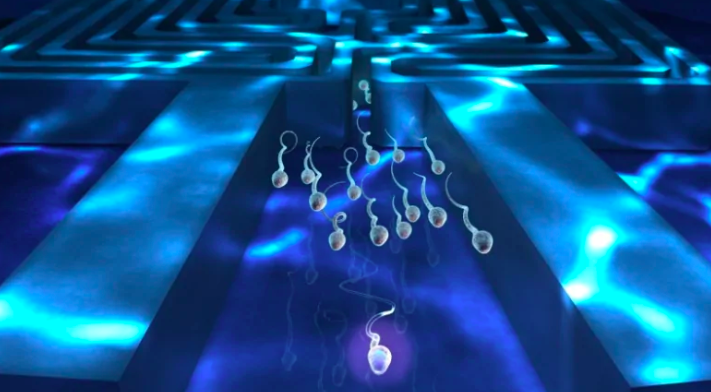U of T scientists create sperm ‘obstacle course’ to spot top specimens
When it comes to sperm, conventional wisdom says the faster, the better.
But fertility doctors have never really had a way to test that theory — until now.
A team of scientists at the University of Toronto have developed a “sperm obstacle course” — and it’s now on its way to clinical trials.
Tom Hannam, a fertility doctor who was involved with the study, spoke to As It Happens host Carol Off about what effect it could have on treatments like in-vitro fertilization.
Here is part of their conversation.
Why did you want to test sperm on an obstacle course?
You know, we’ve been lucky in fertility. There’s been a lot of advances in recent years.
With embryos now, we’re able to do complete genetic testing of an embryo before we even transfer it.
And with eggs, we’re now able to offer women the opportunity to freeze eggs so they can build their family when they’re ready to do so.
But we have not had any material advances for men. In fact, we treat the sperm the same way now as we did 20 and 30 years ago.
But wasn’t the test, and I guess perhaps it still is, that you look for fast little fellows that might do the job?
Sure, you’re looking for the guys who swim the best.
Actually, the way we test sperm right now is we put them in a centrifuge. We spin them down to the bottom and then watch who swims best their way back up to the top.
We take that guy and that’s who we put in the eggs when we’re doing fertility. It’s hardly a natural way of treating the sperm. But that’s what we’ve been doing.
So it’s worked so far up to now. Why did you think that you had to look and see if there wasn’t some better way to test these fellows?
It was my colleague, Dave Sinton. He works in the mechanical engineering department at the University of Toronto. He works in the space of microfluidics. That means looking at how small cells interact in fluid columns at a microscopic scale.
He started to think that there might be a better way and he was right, because we’ve always been assuming that sperm swim. But they don’t — sperm slither.
What sperm like to do, actually, is go around corners. And when you think about it, that makes a lot of sense because sperm don’t actually swim up a fallopian tube. A fallopian tube is a very skinny passageway and they like to edge their way up the fallopian tube.
Of course they do. And this is the fluid column you’re talking about?
Yeah. So what the Sinton Lab was able to create — on a chip, it looks like a silicon computer wafer — but what they did instead is they created a maze.
What we can do in the clinic is we can drop the sperm at one end of the maze and you wait 10 minutes and sperm start popping out at the other end.
And what the guys who’ve managed to get through the maze have done is they’ve self-selected for the sperm who are not just able to swim, but actually able to swim and go around corners — negotiate the edges, as it were.
OK. So does it mean they have a high IQ as well?
I don’t know, but we’ve been able to look at the DNA inside the sperm and we can say that they have a lower fragmentation rate of the DNA. That’s one of the ways we tell who’s a better sperm.
We’re right at the point now of taking the sperm and actually placing them into eggs and what we’re actually looking for is just for healthy babies. And so we’re looking for better outcomes. This could be of real value to men who have sperm quality problems.
Describe this obstacle course a bit more, please.
We devised various versions of things. You could imagine having to go around little triangles or around little squares. But I really emphasize little.
You can see the chip. It’s about the size of a thumbnail. But what’s going on in there is all at the microscopic level.
So these guys, we’re calling it the Sperm Olympics, because we’re trying to work out who’s best capable of getting to the far end. When they reached the other end we’ve got, it’s like the equivalent of a sticky surface for a sperm.
We can use artificial intelligence to help us select the best sperm at the other end and pick the guy up and put him in.
Are there ribbons and a podium?
[Laughs] That’s the next step, isn’t it? We’re going find out because the ribbon is you win the ability to actually get placed into an egg.And our real hope, of course, is that we’re getting healthier embryos as a result.









Redes Sociais - Comentários